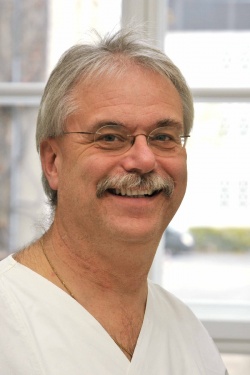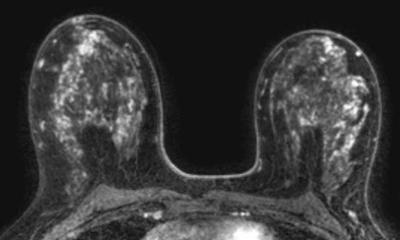31st German Senology Congress - More opportunities in breast diagnostics
23-25 June 2011, Dresden, Germany
Yes, it’s in beautiful Dresden again and -- as in 2006 when the city last hosted the Congress of the German Society for Senology -- this year’s Congress President is Professor Rüdiger Schulz-Wendtland (Department of Radiology, University of Erlangen). However, the repetition ends there; the congress topics will be anything but repeated.
Report: Meike Lerner

Rapidly developing technology and techniques attract ever new debates on their application and benefits. Key topics will include, for example, neo-adjuvant and adjuvant therapy, translational research and intra-operative radiotherapy (IORT), whilst other scientific sessions will focus on digital mammography, fusion technologies and molecular Imaging.
During one of the sessions to be chaired by Professor Rüdiger Schulz-Wendtland during the German Senology Congress the opportunities and limits of molecular imaging with hybrid systems will be examined. At this stage, can certain methods be identified as taking the lead in this field?
There are, he pointed out, several approaches being explored in order to fuse or hybridise different imaging systems. ‘The initial task consists of trying to differentiate between the concepts. In the case of hybridisation, two different systems are interfaced, such as with the PET-CT.
‘In the case of fusion, the approach is to turn two different devices into one. A good example for the latter is the procedure where MRI images are sent to an ultrasound scanner so that the information from both modalities can be simultaneously used for the diagnosis. A further approach, which we are currently looking into at the University of Erlangen in cooperation with the Fraunhofer Institute and partners in industry, is to merge the images generated by mammography and ultrasound.
‘The opportunities inherent in MRI scanning will be another key topic. This includes the examination of spectroscopic procedures that show the processes in the breast on a molecular-biological level, as well as discussion around the need for quality-assured standards for breast MRI, which, in Germany, are not yet available. One of the most exciting topics in the field of MRI is the significance of DCIS.
‘Professor Christiane Kuhl has already published some findings on this topic and has shown that aggressive, high-grade DCIS enhances on MRI scans, although it was generally assumed that it only becomes visible on the MRI in the case of neoangiogenesis.
‘We want to build on these results and to further quantify DCIS. We want to find out whether high-grade DCIS, which enhances on the MRI, has receptors that point towards the aggressive DCIS, later also turning into an aggressive tumour.
What is the role of tomography?
‘Three-dimensional imaging of the breast obviously plays a very important part, for instance in the shape of tomosynthesis where, in addition to the two-dimensional image, images are taken in an angular range of +/- 15 or +/- 25 degrees.
‘Companies such as GE, Siemens or Hologic are carrying out extensive work on these solutions. Fuji, which is continuing to produce 2-D images, is following a very different approach, with the 2-D images being shown on the monitor in 3-D through movement parallax. This currently still requires the use of special glasses; however, new monitors also achieve this effect without the glasses. These different options of 3-D imaging will be a topic at the congress and, very important to me personally, they are not just dreams of the future but very concrete options relevant for clinical use.’
Where does that leave ultrasound?
‘This is another topic that will be given a lot of consideration at the congress, initially in relation to its use in mammography screening.
‘There is currently a requirement to sound the mammary glands in addition to mammography for gland tissue of the density levels 3 and 4. This requirement is based on study results from screening scenarios where analogue mammography systems were being used. As we in Germany generally work digitally, the question as to the density of the mammary gland tissue needs less consideration. The more important, yet so far hypothetical question is: Can tomosynthesis, which may possibly become part of screening in the future, completely replace ultrasound in screening? This is obviously a very provocative assumption.’
Especially as ultrasound is playing an increasingly important role in breast diagnostics due to new technological developments…
‘Yes. For instance, elastography has definitely made progress here. However, the indications for elastography are currently not yet clearly defined enough. The procedure appears to play an important part in the differential diagnosis of benign and malignant tumours, and possibly in the field of follow-up of neoadjuvant chemotherapy, as elastography also takes into account morphology.
‘In summary, the new procedures all offer great potential, but the respective, appropriate areas of application for each procedure will only become apparent over the next few years.’
21.06.2011











